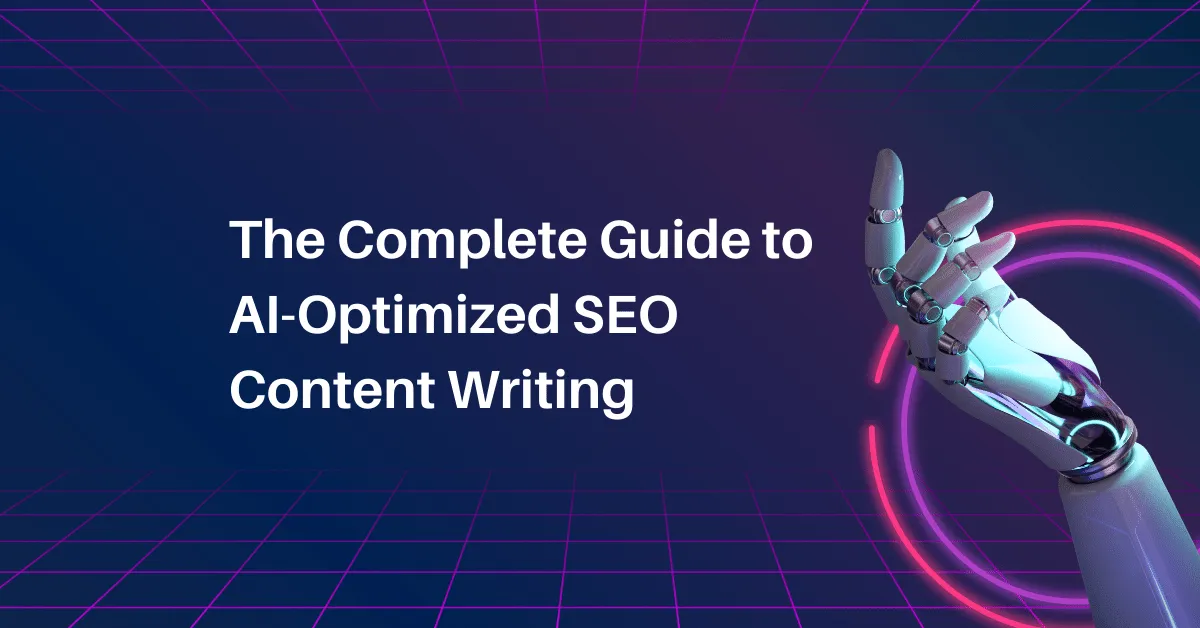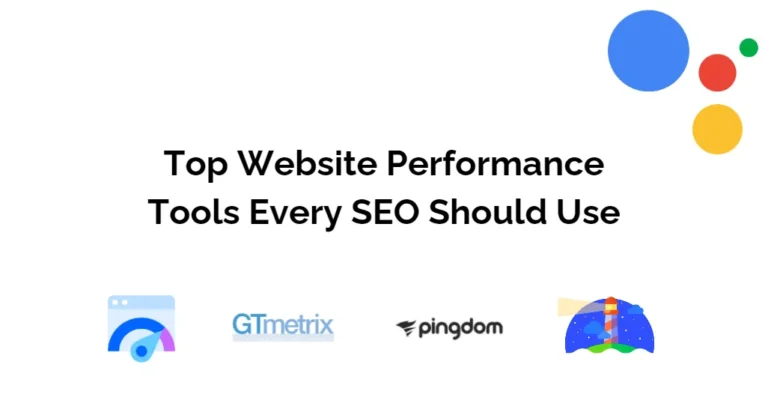Have you ever struggled with writing content that ranks in search engines? You spend hours researching keywords and crafting compelling copy, only to find your content languishing on page 10 of Google.
In a world where everyone is using AI tools to churn out content, it’s important to stand out and I’ll tell you how.
What gives? The truth is writing SEO-optimized content that also engages readers is hard. There’s a lot to balance – keywords, readability, compelling info. No wonder so many marketers and business owners find it overwhelming.
Introduction to AI Content Writing Tools
Al-optimized content writing tools can help you create search engine-friendly marketing copy. By analyzing data on what content ranks well, these tools suggest keywords, topics, outlines, and more to guide your writing.
Some popular AI writing assistants include:
- Grammarly: Checks for grammar, spelling, and punctuation errors. It also provides genre-specific style guides and word choice suggestions to make your writing clear, concise, and compelling.
- Hemingway App: Highlights complex sentences and suggests edits for a simpler, more scannable writing style. It gives your content an easy-to-read score so you can make quick improvements.
- Descript: Uses machine learning to analyze and transcribe audio, then transform it into polished written copy. It’s ideal if you prefer to speak about your first drafts or interviews. Descript can also edit and rewrite transcribed content to sound more engaging.
- Persado: Focuses on optimizing the persuasive elements of marketing copy like email subject lines, social media posts, and landing pages. It provides data-backed wording recommendations that resonate most with your target audience.
With Al-based tools, you can research topics, get keyword and outline ideas, check and improve your drafts, and even have a first draft created for you. Then, you take over, revising and rewriting as needed to ensure the result is compelling, authentic, and aligned with your brand. The future of AI and content creation is collaborative.
How AI Tools Optimize Content for SEO
When it comes to optimizing content for search engines, AI tools are becoming invaluable. Here are a few ways AI can boost your SEO:
Analyze Keyword Effectiveness
Al tools can analyze the keywords you want to target and determine how effective they’ll be for ranking in search engines. They consider factors like search volume, competition, and relevance to your content to suggest the keywords with the best potential. Using the right keywords is key to getting found on Google, so this type of analysis is crucial.
Generate Keyword-Rich Content
Once you’ve chosen your target keywords, AI tools can help you craft content that prominently features those keywords. They may suggest related keywords and phrases to include and the optimal keyword density to aim for. The content these tools produce reads naturally while still optimized for your keywords.
Improve Page Structure
How you structure your content on the page affects how search engines interpret it. AI tools can analyze your content and suggest ways to improve heading tags, alt image attributes, internal linking, and more to help search bots better understand your content. Following these structural recommendations helps ensure your page is optimized for search engines and human readers.
Continuous Optimization
The work continues once you’ve published your content. AI tools can continue to monitor how your page is performing in search rankings and suggest optimizations to improve visibility over time. They may recommend updating or expanding content, adding multimedia, earning more backlinks, and other tactics to boost your page. Continuous optimization is key to achieving and maintaining high search rankings.
The Best AI Writing Tools for SEO Content
Al writing tools can help optimize your content for search engines by analyzing topics and keywords to generate natural-sounding copy. The best tools for SEO content writing are:
Jasper AI
Jasper AI is a natural language processing tool that can generate content based on user-provided input. It can create blog posts, product descriptions, and even entire books. Jasper AI also offers a range of features to help users optimize their content for search engines.
Price: The tool’s pricing starts at $39/month.
SurferSEO
SurferSEO is an AI content creation and optimization tool for search engine marketing. It provides keyword research, content analysis, and automatic rewriting of blog posts and web pages. SurferSEO checks for keyword density, placement, diversity, and more. It then rewrites your draft to improve keyword targeting and searchability.
Price: Plans start at $29/month.
Peppertype
Peppertype is a short-form content creation and ideation platform that enables businesses to generate quality content in just a few seconds.
Price: The tool starts with a free plan, where you can create up to 10,000 words for free. Once your free tenure ends, you must subscribe to an initial $25/month plan.
Copy.ai
Copy.ai is an AI writing assistant that analyzes your content and provides suggestions to improve readability and SEO. It examines word choice, sentence structure, keyword placement, and more. Just paste in your draft copy, and Copy.ai will suggest edits to strengthen your message and boost your search ranking.
Price: The tool is free to try and offers paid plans for businesses.
WordAi
WordAi spins and rewrites your content to create unique variations while keeping the meaning intact. It analyzes your copy to determine topics, keywords, and semantic relationships between words, generating highly ranked versions in search engines.
Price: WordAi offers a free trial and monthly subscription plans starting from $9 for bloggers and businesses.
Hypotenuse AI
Hypotenuse AI features a powerful writing tool that generates high-quality, relevant content automatically. It can create unique and engaging articles by entering a topic and a list of keywords.
Price: Hypotenuse AI is priced at $24.00 per month. A 7-day free trial is also available.
Rytr
Rytr is an AI writing assistant that helps you write better and faster. Its library has 25+ AI models, which can generate content in various formats. It can also generate up to 5,000 characters of content in just a few seconds.
Price: There is a free plan (10,000 characters/month); a saver plan is available for $9/month.
MarketMuse
MarketMuse is an AI-powered content platform aimed at SEO content creation and optimization. It offers tools for researching keywords, analyzing competing content, and generating unique blog posts and web copy. MarketMuse scores your content for searchability and provides feedback on strengthening keyword usage, improving readability, increasing social shares, and boosting rankings.
Price: Pricing starts at $149/month with a free 7-day trial.
Step-by-Step Guide to Creating SEO Copy With Al
Once you have your outline and strategy, it’s time to start writing your SEO copy. Here are the basic steps to follow:
- Gather your research. Review your keyword research, persona information, and other relevant data you have compiled. Have it handy so you can refer to it as you write.
- Optimize your page title and meta description. These are the first parts of your copy that both search engines and users will see. Use your target keyword in the title, make it compelling, and write a meta description of about 155 characters.
- Focus on your introduction. Start with an attention-grabbing opening sentence that includes your target keyword. Briefly explain the topic and how it will benefit the reader. Your intro should be 3 to 4 sentences.
- Use your target keyword in the first 100 words. Place it in the beginning of sentences and paragraphs, in headings, and as you explain concepts. But don’t overdo it. Aim for a natural 2% to 3% keyword density.
- Break up text with visuals and headings. Images, infographics, bulleted lists, and numbered instructions make the page more skimmable. Use headings to break up sections.
- Provide value to the reader. Explain concepts thoroughly, give relevant examples and stats, share actionable tips, and end with a call to action like “Here’s what you can do now…”. Offer genuinely useful information.
- Conclude with a summary. Briefly reiterate the main benefits and CTAS. End by encouraging the reader to take the next step. Keep your conclusion around 2 to 3 sentences.
- Review and edit. Check for any grammar, spelling, or formatting issues. Read through to ensure a smooth flow and a good balance of keywords, headings, and multimedia. Get a second set of eyes if possible.
- Publish and promote. Post your new SEO copy on your site and share it on social media platforms. Build some backlinks to the content and keep optimizing it over time based on performance.
Tips for Editing and Enhancing Al-Generated Content
Once you have Al-generated content, it’s time to review and enhance it. Here are some tips for polishing your copy:
Read it aloud
Reading the content aloud helps identify any awkward phrasing or wording. Make notes of anything that doesn’t sound right and rework those sections.
Check the flow and coherence
Ensure your key points and ideas flow logically from one to the next. Look for any gaps in information or transitions that seem abrupt. Rearrange or add new sentences to create a smooth flow and coherent narrative.
Strengthen headings
Headings should be compelling and capture the reader’s interest. Review each heading and see if there’s a way to make them more engaging or clickable. Search engine optimization (SEO) tools can help determine which headings may rank higher in search results.
Include keywords
Double-check that you’ve included important keywords for your topic and industry in the content, headings, and page title. Not just once but multiple times, where it makes sense.
Tighten sentences
Look for sentences that seem too long or wordy and tighten them up. Limiting sentences to 15-20 words is a good rule of thumb. Vary your sentence structure and length for the best flow.
Check facts
Verify any facts, statistics, quotes, or examples in the content. Double-check that all information is accurate, up to date, and properly cited. Make corrections as needed.
Proofread carefully
Carefully proofread the entire piece of content for any spelling, grammar, or punctuation errors. Even AI tools can make mistakes, so a final human review is critical.
Conclusion
So there you have it, your complete guide to leveraging AI for optimized SEO content creation. The tools and techniques I covered can help boost your content marketing efficiency while improving quality and search rankings at the same time.
What are you waiting for? Give some of these AI writers and optimizers a try and see how they can transform your content creation workflow.
The future is here, and AI is ready to take your SEO content writing to the next level if you let it. The only question is, are you ready for it? If so, it’s time to start reaping the benefits of AI for content marketing and never look back.
Hiring an SEO expert can save you time and effort if you find completing all the SEO work alone challenging.







